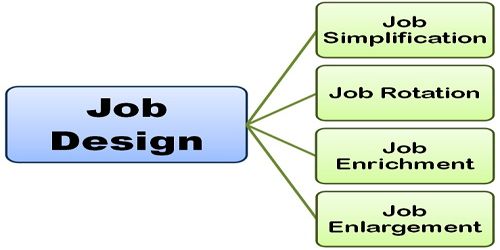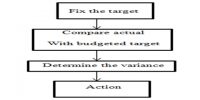Job Design is the work arrangement (or rearrangement) aimed at reducing or overcoming job dissatisfaction and employee alienation arising from repetitive and mechanistic tasks. Through job design, organizations try to raise productivity levels by offering non-monetary rewards such as greater satisfaction from a sense of personal achievement in meeting the increased, challenge and responsibility of one’s work. Job enlargement, job enrichment, job rotation, and job simplification are the various techniques used in a job design exercise.
Job design is important for an organization to perform the organizational activities in the most efficient and effective manner. It provides the required information about the incumbent and also specifies the way of performing the tasks. Therefore, job design is very important for the organization due to its benefits as follows:
Organizational Design: The job design specifies the contents and procedures of performing the task in the organization. Hence, it helps in designing an organizational structure. The organizational structure is determined by the job design process. It plays a key role in assessing the need and requirement of organizational structure. Job design also specifies organizational culture, norms, and values that its members need to follow to achieve organizational goals.
Structure of Competent Employee: Job design is a systematic approach of providing job-related data and information on skills, knowledge, and ability of the incumbent to perform the task. On the basis of the information provided by it, the job description and job specification schedule are prepared, which helps the best-suited candidate for the job. It provides a milestone to select the competent employee who is capable of performing the task well in the organization.
Motivation and Commitment of Employees: Job design makes the work more interesting and challenging, which motivates the employees for a higher level of performance. The challenging and interesting job provides better pay for the employees which inspire them for better job performance. Along with motivation job design also brings a high degree of commitment in them towards organizational objectives. This helps to increase organizational productivity and employee satisfaction at work.
Environmental Adaptation: An organization is operated in a dynamic environment. Hence, any change in the environmental forces can have a direct impact on organizational performance. Therefore, a systematic job design process tries to address the change that has occurred in the organizational environment. The process of job design and job redesign is prepared in such a way that it adapts the change in the environmental forces.
Labor Relation: A well-prepared job design brings a harmonious relation between employees and management. On the other hand, poorly prepared job design creates employee-grievances, in disciplinary actions, greater employee turnover, greater absenteeism, and conflict.
Quality of Work Life: A quality of work life is understood as an efficient relationship between employees and organizational working environment.
















